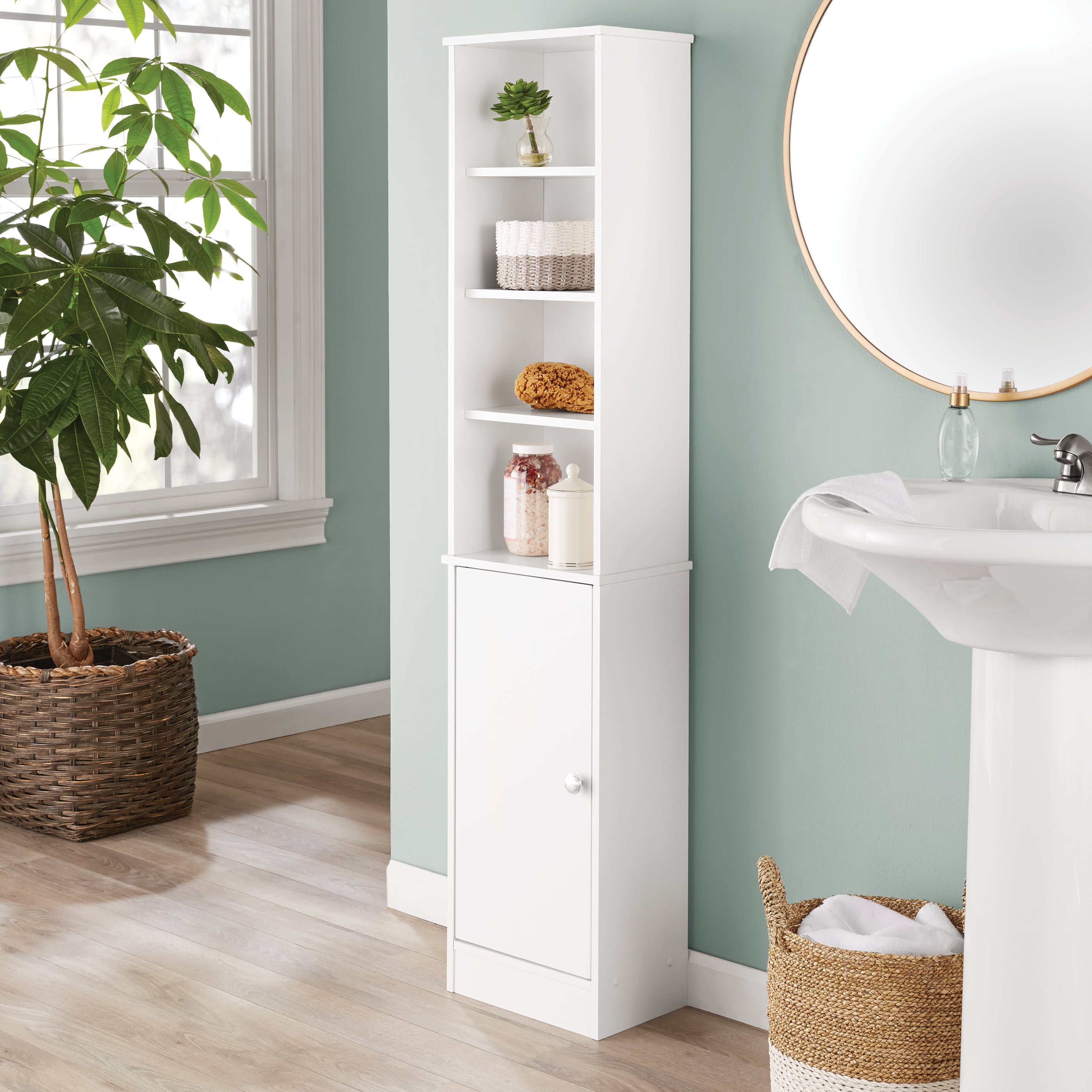Benefits of Built-in Bathroom Linen Cabinets: Built In Bathroom Linen Cabinets

Built-in bathroom linen cabinets offer a multitude of advantages over freestanding cabinets, making them a highly desirable choice for enhancing bathroom storage and organization. They seamlessly integrate into the bathroom design, maximizing space efficiency and creating a cohesive and stylish look.
Enhanced Bathroom Storage and Organization
Built-in linen cabinets provide a dedicated and organized space for storing towels, toiletries, and other bathroom essentials. They eliminate the need for bulky freestanding cabinets, freeing up valuable floor space and creating a more spacious and uncluttered bathroom environment.
Design Features for Enhanced Functionality
Built-in linen cabinets can be customized with various design features to cater to specific storage needs and preferences. These features include:
- Shelves: Adjustable shelves provide flexibility in accommodating items of different sizes, maximizing vertical space utilization.
- Drawers: Drawers offer a convenient and organized way to store smaller items like toiletries, makeup, and medications.
- Pull-out Baskets: Pull-out baskets are ideal for storing bulky items like towels and linens, making them easily accessible.
Maximizing Space within Built-in Linen Cabinets, Built in bathroom linen cabinets
- Vertical Space: Utilize the full height of the cabinet by incorporating shelves that reach the ceiling. This maximizes storage capacity and minimizes wasted space.
- Corner Storage: Optimize corner space by installing corner shelves or pull-out baskets to maximize storage potential.
- Door Storage: Add hooks or small shelves to the inside of cabinet doors to store smaller items, such as hairbrushes, razors, or cleaning supplies.
Installation and Maintenance

Installing built-in linen cabinets requires careful planning and execution to ensure a durable and functional addition to your bathroom. This section will guide you through the steps involved in installing these cabinets, including framing, drywall, and finishing, and provide tips for maintaining them over time.
Installation Process
The installation of built-in linen cabinets involves several steps that require specific tools and expertise. Here’s a breakdown of the process:
- Framing: This step involves constructing the framework for the cabinet using wood studs. It’s crucial to ensure the frame is plumb, level, and square for a stable and aesthetically pleasing cabinet.
- Drywall: Once the framing is complete, drywall panels are attached to the frame. The seams are then taped, mudded, and sanded to create a smooth, seamless finish.
- Finishing: The final step involves painting or wallpapering the cabinet to match the bathroom’s decor. This step also includes installing the cabinet doors, hinges, and hardware.
Ventilation and Moisture Control
Maintaining proper ventilation and moisture control within built-in linen cabinets is essential for preventing mold and mildew growth. Here are some key considerations:
- Venting: Install a vent or fan in the cabinet to allow for air circulation and moisture removal. This is particularly important in humid environments.
- Moisture-Resistant Materials: Use moisture-resistant materials for the cabinet’s construction, such as plywood, cedar, or treated lumber. This will help prevent damage from moisture exposure.
- Proper Sealing: Seal all seams and joints in the cabinet to prevent moisture from penetrating and causing damage.
Maintenance Tips
Regular maintenance helps to extend the lifespan of built-in linen cabinets and keep them looking their best. Here are some practical tips for maintaining your cabinets:
- Cleaning: Dust and wipe down the cabinet surfaces regularly to prevent the buildup of dirt and grime. Use a mild cleaner and a soft cloth to avoid scratching the finish.
- Organizing: Keep the cabinet organized by storing items in designated containers or bins. This will make it easier to find what you need and prevent clutter.
- Hardware: Inspect the cabinet hardware, such as hinges, handles, and drawer slides, for signs of wear and tear. Replace any damaged or malfunctioning hardware promptly to ensure smooth operation.
Preventing Damage
Here are some practical tips for preventing damage to built-in linen cabinets over time:
- Avoid Overloading: Avoid overloading the cabinet shelves to prevent them from sagging or collapsing.
- Protect from Water Damage: Take precautions to prevent water from spilling onto the cabinet surfaces. For example, place a waterproof liner on the bottom shelf or use a drip tray under the sink.
- Proper Storage: Store items that are susceptible to moisture damage, such as linens and towels, in airtight containers. This will help prevent mildew and odor.
